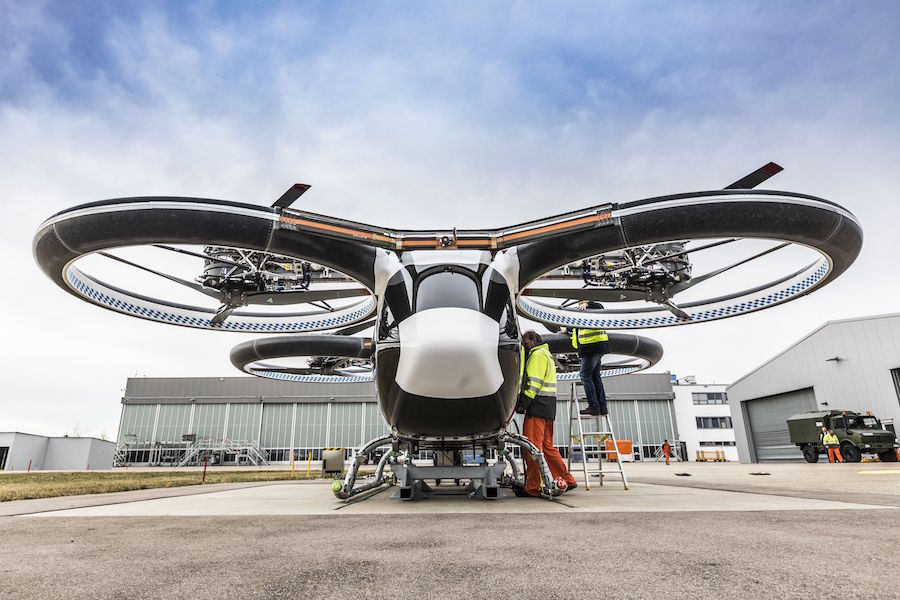
The CityAirbus was presented on March 11 at the City of Ingolstadt to members of the German government and the public. On Friday May 3, 2019, the prototype urban air mobility vehicle took its first flight. Photo: Airbus
City Airbus, the namesake company’s unmanned, ducted-fan-driven urban air taxi prototype, made its first flight May 3 in Donauwörth, Germany.
Airbus Helicopters did not make a formal announcement of the milestone, but Chief Executive Bruno Even tweeted a photo of the engineering teams in front of the City Airbus electric vertical takeoff and landing (eVTOL) prototype, and broke the news.
“Congratulations to the Airbus and Siemens teams who performed the first successful take-off of the CityAirbus demonstrator in Donauwörth,” Even wrote on Twitter. “Next step: flight envelope expansion in Manching! Well done all!”
The flight consisted of a tethered “jump” conducted at the Airbus flight test facility in Donauwörth, company spokesperson Guillaume Steuer said in an email.
“This was meant to further assess the performance of the propulsion and flight control systems, as well as a few other data points,” he wrote. “The demonstration program will now move to Manching where the flight envelope opening will be carried out in a restricted airspace.”
Airbus is taking a “no-toy approach” that calls for rapid development and construction of an air vehicle to prove the concept. The company has not ruled out including a pilot on board an operational air taxi, but is perfecting the architecture and safety systems with the unmanned CityAirbus first.
The four ducts that surround each set of rotors are just high enough from the ground for a 5-foot-10 reporter to walk beneath them without bumping his head.
The all-electric vehicle runs on four 800-volt batteries that power four sets of paired, counter-rotating props inside aerodynamic ducts fixed to the fuselage. It was designed for and dedicated to operating in urban environments. Each prop is 2.8 meters, or just over nine feet, in diameter and the ducts surround them.
Nominal thrust operational should require around 950 rpm and around 1,000 rpm should be good enough for takeoff.